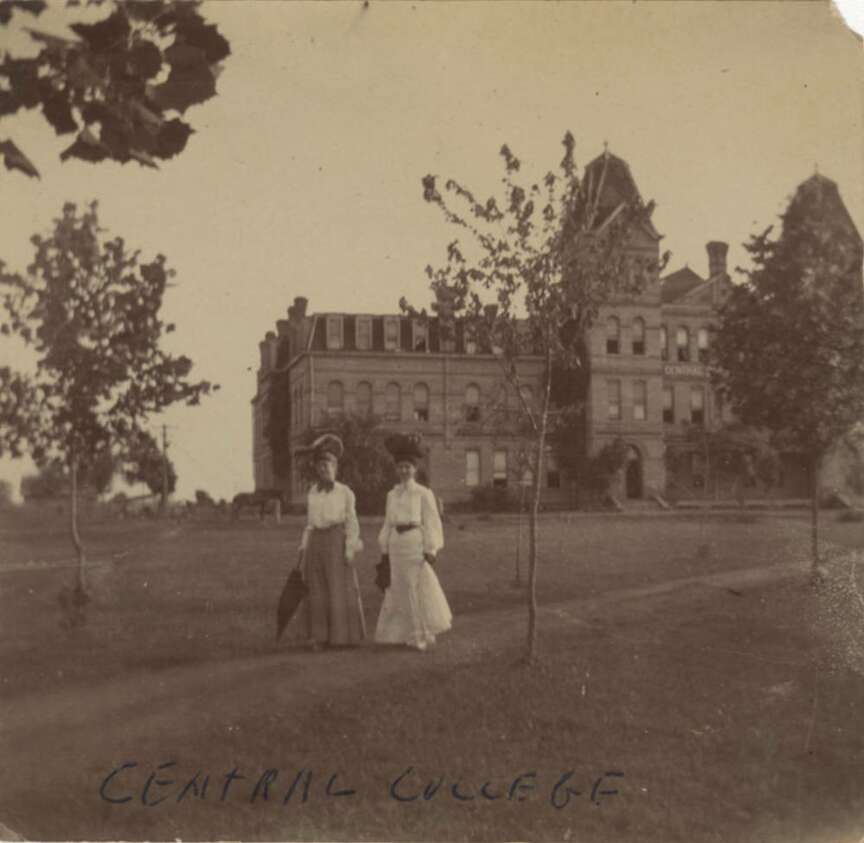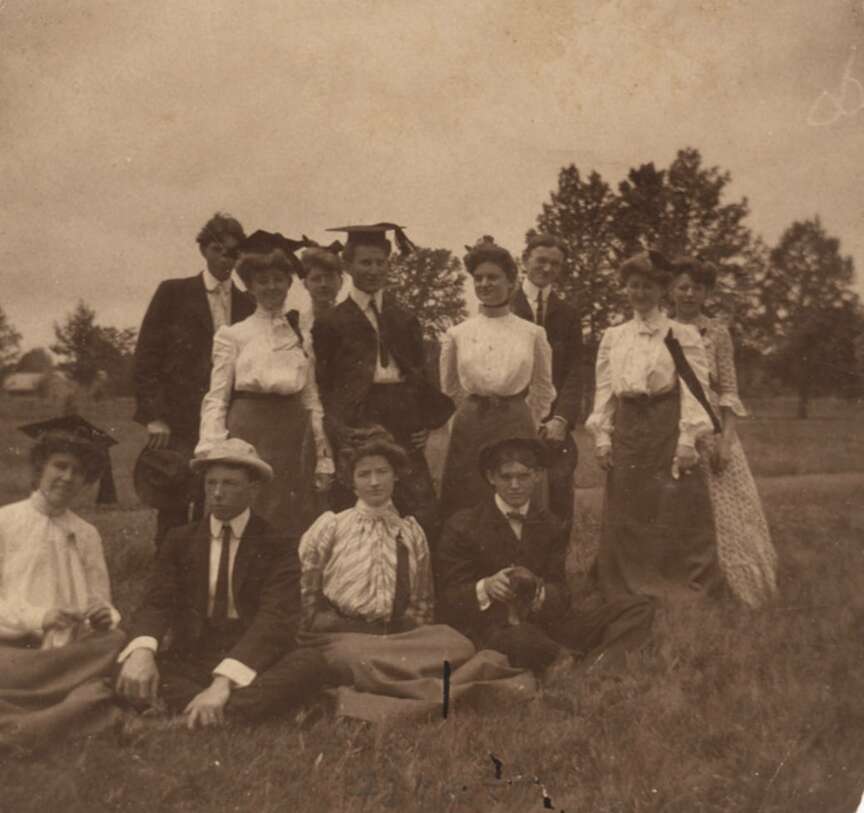Founded in 1892, Central College in Conway was supported by the Arkansas Southern Baptist Association with the aim of educating young women. The school closed in 1950, and the campus now houses Central Baptist College, the only institution of higher education in the state affiliated with the Baptist Missionary Association of Arkansas.
Efforts by Arkansas Baptists to open a college to educate women date to the 1880s. In 1890, the state convention authorized Col. G.W. Bruce of Conway to chair a committee to select a location and open the institution. Bids for the college were received from Bentonville, Conway, Ozark and Rogers. Reporting back to the convention the following year, Bruce and the committee stated that Conway delivered the best offer — more than $27,000 in pledges, 10 acres of land and a completed building by Jan. 1, 1893. The central location of the city within the state was also a positive.
The college opened several weeks before the convention met, with classes beginning on Oct. 3, 1892. While construction of a $20,000 building was underway, classes met at Conway Baptist Church. The committee selected a temporary board of trustees that hired the Rev. Charles Williams as the president of the institution and chartered the institution as Central College. The board leased the college to Williams and allowed him to choose the faculty and manage all aspects of the institution, with board approval. Faculty members were required to be members of a Baptist church.
Central College, Conway, Ark. (Butler Center for Arkansas Studies. Central Arkansas Library System)
Williams served for one year as president before being replaced by Seaton Thompson in 1893. He increased the enrollment at the college to more than 100 by the second year of operation before resigning in 1895.
John Gardner Lile assumed the presidency after Thompson and served until 1901. His administration saw the completion of the third floor of the main building and the addition of a pipe organ in the chapel. Lile declined to serve past his initial six-year term due to a financial loss. W.W. Rivers took control of the college in 1901 and worked with the board to raise funds for the institution, overseeing several improvements to the campus. Upon his retirement in 1911 from the presidency, John W. Conger, the founding president of Ouachita Baptist College (now Ouachita Baptist University) in Arkadelphia, took the position.
Conger increased the enrollment from 129 the year before his arrival to 165 in 1911. He also oversaw the discontinuation of primary and secondary education programs, focusing the limited resources of the college on postsecondary education. In 1912, the citizens of Conway assumed the debt of the college in exchange for the state convention agreeing to keep the institution in the city. Conger continued to serve until 1920, when a total of 216 students enrolled. Upon his retirement, Conger was named president emeritus and continued to receive a salary.
Conger’s replacement was professor Doak Campbell, a graduate of Ouachita. He led an effort to reduce the course offerings and transform the institution into a junior college. This led to a strengthening of the academics and membership in the American Association of Colleges and Schools in 1922. The college achieved accreditation with the North Central Association in 1925, maintaining accreditation until 1948. Campbell served until 1928 and later served as the president of Florida State College for Women and was the founding president of Florida State University.
 Central College: Katie Harrison (right) with female student, walking in front of college building, Conway, Ark. (Butler Center for Arkansas Studies. Central Arkansas Library System)
Central College: Katie Harrison (right) with female student, walking in front of college building, Conway, Ark. (Butler Center for Arkansas Studies. Central Arkansas Library System)
Serving as president for a single year after Campbell was former University of Arkansas professor and former governor of the state Charles Hillman Brough. James Sterling Rogers, secretary of the Arkansas Baptist State Convention, assumed the presidency in 1928, serving until 1940. During his time at the college, he maintained the enrollment with little support from the denomination. O.J. Wade and E.S. Preston both served for three years between 1940 and 1946. Although monies from the denomination again supported the college during Preston’s term as president, the institution acquired about $10,000 of debt. R.L. Whipple served as president from 1946 to 1947.
In 1947, the board of the college voted to move the institution to Camp Joseph T. Robinson in North Little Rock and to make the college coeducational. This move proved to be unsuccessful, and the college closed in 1950. The campus of the former college was sold to the Arkansas Missionary Baptist Association in 1952 and became the home of Conway Baptist College, now known as Central Baptist College.
Little remained of the former campus by the beginning of the 21st century. Four columns, erected by the classes of 1909, 1910 and 1917, remain on the campus of Central Baptist College. Old Main, constructed in the 1890s, was demolished in 1984. — David Sesser
This story is adapted by Guy Lancaster from the online Encyclopedia of Arkansas, a project of the Central Arkansas Library System. Visit the site at encyclopediaofarkansas.net.
 Central College: Katie Harrison (fifth from left) with male and female students, some with graduation caps, Conway, Ark. (Butler Center for Arkansas Studies. Central Arkansas Library System)
Central College: Katie Harrison (fifth from left) with male and female students, some with graduation caps, Conway, Ark. (Butler Center for Arkansas Studies. Central Arkansas Library System)






















/cdn.vox-cdn.com/uploads/chorus_asset/file/25739950/247386_Elon_Musk_Open_AI_CVirginia.jpg)



